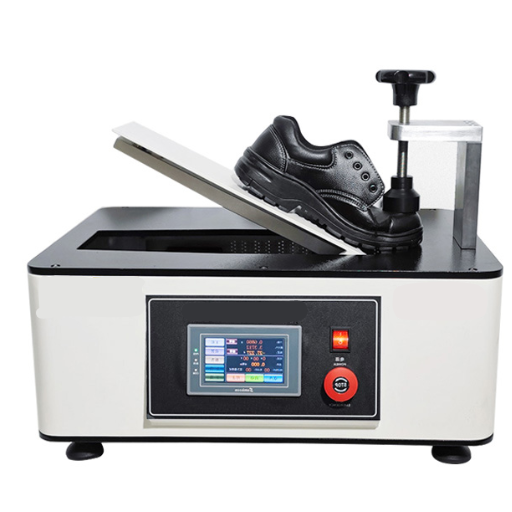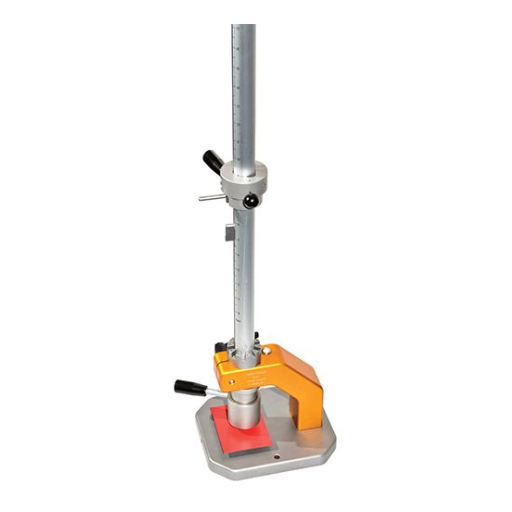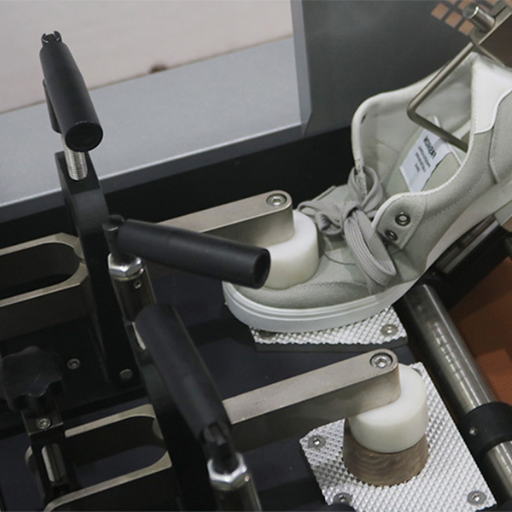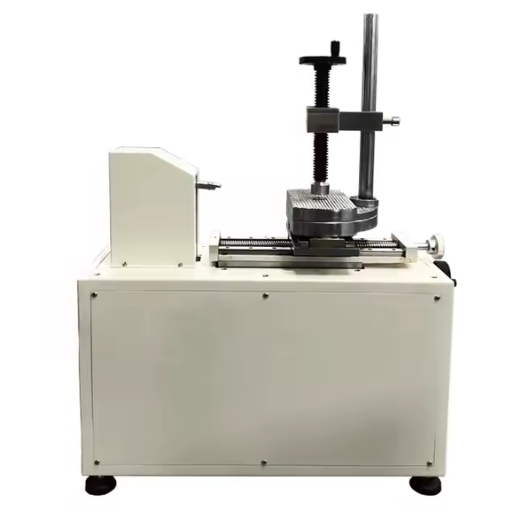The footwear industry demands precision, durability, and quality to meet the expectations of consumers and ensure products perform under diverse conditions. To achieve these standards, robust footwear testing equipment plays a vital role in assessing everything from material strength to performance metrics. This article explores the cutting-edge testing tools and methodologies that empower manufacturers to produce reliable, high-quality footwear. Whether you are aiming to optimize production quality, comply with regulatory requirements, or enhance product longevity, understanding the right testing solutions can make all the difference. Read on to uncover the essential equipment and techniques driving innovation and accuracy in footwear testing.
What Are the Key Features of Footwear Testing Machines?

Footwear testing machines are designed to evaluate the durability, performance, and safety of footwear under various conditions. Key features include:
- Durability Testing: Machines assess resistance to wear, tear, and repeated stress to ensure long-term performance.
- Slip Resistance Measurement: They evaluate sole traction on various surfaces to minimize risks of slipping.
- Flexibility and Bending Assessment: These machines test the flexibility of shoes to simulate natural walking or running movements.
- Impact Testing: Equipment measures resistance to sudden forces, ensuring protection in high-stress scenarios.
- Material Quality Analysis: Advanced machines test tensile strength, elasticity, and material aging, guaranteeing the integrity of each component.
Why Is Test Equipment Essential for Footwear Quality?
Test equipment is critical for ensuring footwear meets rigorous safety, performance, and durability standards. It enables manufacturers to conduct precise evaluations of key attributes such as slip resistance, impact protection, flexibility, and material strength. Without these tests, products risk failing under real-world conditions, compromising user safety and comfort. Additionally, comprehensive testing ensures compliance with industry regulations and helps identify potential design flaws early, reducing the likelihood of costly recalls or product failures. By leveraging advanced testing technology, companies can uphold high-quality standards, enhance customer trust, and maintain a competitive edge in the marketplace.
How do Shoe Testing Instruments Ensure Accuracy?
Accuracy in shoe testing instruments is achieved through a combination of precision engineering, advanced calibration techniques, and adherence to strict industry standards. For example, these instruments are designed to simulate real-world conditions accurately, such as resistance to abrasion, slip performance, and material durability. Regular calibration ensures that measurements remain reliable and consistent, while state-of-the-art sensors and control systems provide high levels of data precision. Additionally, testing protocols align with recognized global standards like ISO or ASTM, ensuring consistent and authoritative evaluation of footwear quality.
What Are the Different Types of Footwear Testing Systems?
The different types of footwear testing systems include abrasion testers, slip resistance testers, bending resistance testers, tensile strength testers, sole flexing machines, impact testers, and hydrolysis testing systems.
|
Testing System |
Purpose |
Key Parameter |
|---|---|---|
|
Abrasion Tester |
Tests wear resistance |
Abrasion Rate |
|
Slip Resistance Tester |
Assesses slip safety |
CoF (Coefficient of Friction) |
|
Bending Tester |
Evaluates flexing durability |
Flex Cycles |
|
Tensile Strength Tester |
Measures stretching capacity |
Tensile Force |
|
Sole Flexing Machine |
Tests sole flexibility |
Flex Strength |
|
Impact Tester |
Analyzes shock absorption |
Impact Force |
How to Choose the Right Footwear Testing Product?

When choosing the right footwear testing product, it is critical to assess the specific performance parameters that need evaluation. Begin by identifying the intended use of the footwear and the corresponding functional requirements. For instance:
- Abrasion Tester is essential for assessing wear resistance in high-friction environments.
- Slip Resistance Tester is ideal for measuring safety performance through the Coefficient of Friction, crucial for workplace or outdoor footwear.
- Bending Tester applies where flexing durability is a priority, particularly for athletic or flex-intensive designs.
- Tensile Strength Tester is required for products that demand high stretch resilience.
- Sole Flexing Machine ensures sole flexibility, a key factor in comfort and long-term durability.
- Impact Tester is necessary to evaluate shock absorption capacity, crucial for protective or high-impact footwear.
Carefully match your testing requirements with the functional specifications of the testing equipment to ensure precise and reliable performance evaluations.
What Factors Affect the Selection of a Test Machine?
- Type of Material: The composition and properties of the material being tested play a significant role in determining the appropriate test machine. For instance, rigid materials may require compressive tests, whereas flexible ones may need tensile or flexing tests.
- Intended Application: The end-use of the product dictates the testing requirements. For example, footwear for athletic purposes may need machines that evaluate impact resistance and durability under extreme conditions.
- Testing Standards and Regulations: Compliance with industry-specific standards (e.g., ASTM, ISO) is critical. The test machine must meet the technical specifications outlined in these guidelines to ensure accurate and certified results.
- Testing Load Capacity: The machine must support the load range required without compromising accuracy. High-capacity machines are essential for testing robust materials, while precision instruments are necessary for delicate or lightweight items.
- Automation and Data Analysis Capabilities: Advanced testing equipment with automated processes and integrated software for data collection and analysis offers superior reliability and repeatability, making it suitable for high-volume or complex testing procedures.
How to Evaluate Test Results for Different Footwear?
When evaluating test results for different footwear, I focus on several key factors to ensure accuracy and relevance. First, I analyze the data against industry standards to confirm that the footwear meets performance benchmarks, such as durability, cushioning, and traction. Next, I consider the specific use case of the footwear—whether it’s designed for running, hiking, or casual wear—ensuring the test results align with the intended functionality. Lastly, I assess variations in environmental and user conditions during testing to account for real-world scenarios. By integrating comprehensive data analysis and context, I can determine the footwear’s overall quality and suitability for its target use.
What Are the Standards for Footwear Testing Systems?
Footwear testing systems must adhere to recognized international standards to ensure reliability, consistency, and alignment with industry benchmarks. Key standards include:
1. Durability Testing
-
- Simulates prolonged use to assess material longevity.
- Parameters:
- Abrasion resistance (ISO 4649): Measures wear on outsole materials.
- Flex resistance (ISO 17707): Evaluates material cracking after repeated bending.
- Comfort and Fit
- Focuses on user ergonomics and wear experience.
- Parameters:
- Breathability (ISO 20344): Assesses air permeability of upper materials.
- Cushioning (ASTM F1614): Quantifies shock absorption capability.
- Traction and Slip Resistance
- Evaluates grip performance under various conditions.
- Parameters:
- Coefficient of friction (ASTM F2913): Tests outsole static and dynamic friction on different surfaces.
- Environmental Resistance
- Assesses how footwear withstands diverse environmental conditions.
- Parameters:
- Water penetration and absorption (ISO 20344).
- Heat and cold resistance to simulate extreme temperatures.
- Safety and Protection
- Ensures compliance with safety footwear regulations when applicable.
- Parameters:
- Impact resistance (ISO 20345): Tests toe cap strength.
- Puncture resistance (EN 12568): Validates outsole protection against sharp objects.
By aligning with these standards, footwear testing systems provide consistent and credible insights into product performance, addressing durability, comfort, safety, and environmental robustness comprehensively.
Understanding the Importance of Impact Tester in Shoe Testing

The impact tester plays a critical role in evaluating the safety and durability of footwear, particularly in environments requiring toe protection. By simulating forces that replicate real-world impacts, this equipment ensures that toe caps comply with standards such as ISO 20345, which specifies minimum impact resistance. Accurate testing not only validates protective performance but also identifies potential weaknesses in materials or design. This provides manufacturers with actionable data to refine their products, ultimately ensuring compliance, user safety, and reliability in demanding conditions.
How Does an Impact Tester Work?
An impact tester operates by simulating controlled conditions to measure a material’s or product’s resilience to sudden forces. The process typically involves positioning the test specimen within the device, where it is subjected to a calculated impact load using a pendulum, drop weight, or similar mechanism. Sensors monitor parameters such as force, energy absorption, and deformation, enabling precise measurement of the material’s response. Test results are consistent with standards such as ISO, ASTM, or EN guidelines, ensuring relevance across industries. This data is crucial for assessing durability, helping manufacturers optimize materials and designs while meeting safety and regulatory requirements.
What Role Does it Play in Safety Footwear Evaluation?
Safety footwear evaluation relies on impact testing to ensure compliance with industry safety standards and to assess the material’s ability to withstand sudden forces. By simulating real-world impacts through rigorous testing, we verify that critical components, such as toe caps and soles, meet required levels of protection. This ensures the footwear can effectively safeguard wearers against workplace hazards like falling objects or compression, enhancing both user safety and product reliability.
What are the Benefits of Using High-Quality Footwear Testing Instruments?
- Enhanced Product Safety: High-quality testing instruments ensure that footwear meets strict safety standards, reducing the risk of manufacturing defects and improving overall user protection against workplace hazards.
- Improved Durability Assessment: These instruments accurately evaluate the wear and tear resistance of materials, enabling manufacturers to produce longer-lasting footwear that performs reliably under diverse conditions.
- Regulatory Compliance: Advanced testing tools help manufacturers meet national and international safety regulations, avoiding potential legal issues and building consumer trust.
- Streamlined Quality Control: By providing precise and consistent results, high-quality testing instruments enhance the efficiency of quality control processes, minimizing errors and production downtime.
- Innovation Support: Cutting-edge testing instruments facilitate the development of new designs and materials by enabling comprehensive performance evaluations, fostering innovation within the industry.
Exploring Standards and Research in Footwear Testing

The Role of Standards in Footwear Testing
Footwear testing standards serve as a critical framework to ensure consistent performance, safety, and quality within the industry. Organizations such as ASTM International, ISO, and SATRA establish standardized methods for evaluating factors like durability, slip resistance, and material strength. These standards not only help manufacturers meet regulatory requirements but also enhance consumer confidence by guaranteeing that products have undergone rigorous and uniform testing procedures.
Advances in Footwear Research
Recent research in footwear testing emphasizes the integration of advanced materials, biomechanics analysis, and sustainability. Studies focusing on the use of eco-friendly materials, like recycled polymers and bio-based alternatives, are gaining traction as the industry shifts toward greater environmental responsibility. Additionally, biomechanics research enables a deeper understanding of foot movement and pressure distribution, leading to the development of ergonomic designs that prioritize comfort and performance. These advancements underscore the industry’s commitment to innovation and continuous improvement.
Which International Standards Govern Footwear Testing?
Footwear testing is guided by a range of international standards to ensure quality, safety, and performance across different markets. Prominent among these standards are:
- ISO 20344 – Specifies test methods for safety, protective, and occupational footwear, covering parameters such as impact resistance, slip resistance, flexing durability, and water penetration.
- ISO 17707 – Establishes methods for testing the flex resistance of uppers, ensuring the durability of materials under repeated movement.
- ISO 13287 – Focuses on slip resistance testing, determining footwear traction characteristics under various conditions and materials.
- EN 12568 – Covers toe caps and protective inserts, testing attributes like impact and compression resistance to ensure workplace safety.
- ASTM F2413 – Common in North America, it defines performance requirements for protective footwear, including electrical hazard resistance, puncture resistance, and toe protection.
- SATRA TM144 – A widely recognized standard for abrasion resistance testing of outsoles.
- ISO 22650 – Relates to footwear designed for motorcyclists, testing aspects like transverse rigidity and abrasion resistance for safety during use.
These standards address key technical parameters critical to ensuring that footwear meets specific functional and safety requirements, promoting consistency and reliability within the global footwear industry.
How do ISO and ASTM Standards Compare?
ISO and ASTM standards are both internationally recognized frameworks designed to ensure quality, safety, and performance across various industries, including footwear. While ISO (International Organization for Standardization) standards are developed through global collaboration involving experts from over 160 countries, ASTM (American Society for Testing and Materials) standards are primarily rooted in participation from North America with global adoption in certain industries. ISO standards emphasize broader international consensus and are often referenced by regulatory bodies worldwide. ASTM standards, on the other hand, are highly application-focused with detailed, practical testing methodologies. Despite these differences, both serve complementary roles in harmonizing testing processes and ensuring product reliability, with many industries cross-referencing both systems to meet diverse market requirements.
What Are the Latest Innovations in Footwear Testing?
Recent innovations in footwear testing focus on advanced materials analysis, biomechanical testing, and sustainability assessments. We’ve seen the integration of machine learning algorithms to predict wear patterns and durability more accurately, enabling smarter product design. Additionally, high-precision robotic gait simulators now replicate human movement with greater accuracy, providing deeper insights into comfort and functionality. Sustainability has also become a focal point, with new testing methods evaluating the environmental impact of materials and production processes, ensuring compliance with evolving global standards.
What Makes a Footwear Tester the Best in the Industry?

The best footwear testers in the industry possess a combination of expertise, precision, and adaptability. They have a deep understanding of biomechanics, material science, and performance metrics, enabling them to assess products against stringent standards. Experience with advanced testing equipment, such as pressure mapping systems and robotic simulators, ensures accurate and repeatable evaluations. Furthermore, their ability to provide actionable insights—balancing comfort, performance, and sustainability—sets them apart. Top testers also stay ahead by understanding market trends and regulatory requirements, ensuring footwear designs align with both consumer needs and environmental considerations.
How do Manufacturers Ensure Quality Control?
Quality control is ensured through a combination of rigorous testing processes, advanced technology, and strict adherence to industry standards. Using tools like pressure mapping systems and robotic simulators, we conduct comprehensive evaluations to verify durability, performance, and comfort. Additionally, we consistently monitor market trends and comply with regulatory requirements to ensure our products meet consumer expectations while maintaining sustainability. Frequent inspections at multiple stages of production help us identify and address any inconsistencies, reinforcing our commitment to delivering high-quality footwear.
What are the Performance Metrics for Footwear Testing Equipment?
Performance metrics for footwear testing equipment are essential to ensure accuracy, reliability, and consistency during analysis. Key metrics include:
1. Precision and Accuracy
-
- Measurement Tolerance: ±0.01 mm for dimensional assessments.
- Force Application Accuracy: ±1% for pressure or load measurements.
- Durability and Load Capacity
- Maximum Load Capacity: Up to 5000 N for stress and impact tests.
- Cycle Durability Range: Capable of performing over 1,000,000 test cycles without performance degradation.
- Environmental Simulation Range
- Temperature Range: -40°C to 80°C for climate testing.
- Humidity Tolerance: Up to 95% RH to simulate extreme conditions.
- Data Processing and Reporting
- Sampling Frequency: Minimum of 1000 Hz for high-resolution data capture.
- Connectivity Options: USB 3.0, Ethernet, or Wi-Fi for seamless data transfer and integration.
- Safety and Compliance
- Equipment should adhere to ISO standards, such as ISO 4649 for abrasion resistance or ISO 20344 for general footwear testing.
These parameters ensure that the testing equipment is capable of providing detailed insights into the performance and durability of footwear under varying conditions.
How to Identify High Quality Testing Systems?
To identify high-quality testing systems, I focus on several critical factors:
- Accuracy and Reliability: I ensure the system provides precise and consistent results across repeated tests. This includes checking calibration capabilities and adherence to standards such as ISO 4649.
- Versatility: I look for equipment that accommodates multiple testing methods and material types, ensuring comprehensive analysis for different scenarios.
- Data Management and Connectivity: Modern testing systems should offer robust software integration, real-time data capture, and multiple connectivity options such as USB, Ethernet, or Wi-Fi for efficient data sharing and analysis.
- Compliance with Standards: To guarantee credibility, I verify that the system meets recognized safety and performance standards like ISO 20344.
- Durability and Support: A high-quality system must employ durable components and offer manufacturer support, including technical services and software updates, to ensure long-term usability.
By evaluating systems against these criteria, I can confidently select equipment tailored to precise industrial and research needs.
Reference Sources
-
STEP Lab – Footwear Testing Systems: Offers precise performance and reliability evaluations for footwear testing.
-
Amade Tech – Footwear Testing Machines: Provides a range of testing machines for determining various properties of shoe materials and finished shoes.
-
Paramount Instruments – Best Footwear Testing Equipments: Supplies instruments that measure comfort, safety, durability, and performance, meeting international standards like ISO and ASTM.
-
Testronix Instruments – Footwear Testing Instruments: Offers a variety of testing instruments, including color matching cabinets and tensile testing equipment.
-
Top Footwear Testing Machine in China
Frequently Asked Questions (FAQs)
Q: What is the importance of using footwear testing equipment?
A: Footwear testing equipment is crucial for ensuring the quality, durability, and safety of footwear products. It helps manufacturers and suppliers verify that boots and shoes meet industry standards and regulations, providing consumers with reliable products.
Q: How does abrasion resistance testing work for footwear?
A: Abrasion resistance testing measures how well a material can withstand wear and tear. Equipment for this type of test typically involves rubbing the footwear material against an abrasive surface to simulate long-term use and assess its durability.
Q: What is the significance of static testing in footwear?
A: Static testing evaluates the shoe’s ability to withstand static forces, ensuring that the footwear can support the wearer’s weight and maintain its shape under pressure. This type of test is essential for products like boots that must provide stability and support.
Q: Can you explain the BS and DIN standards in footwear testing?
A: BS (British Standards) and DIN (Deutsches Institut für Normung) are sets of guidelines for quality and safety in footwear. These standards ensure that products meet specific criteria for performance, safety, and durability, facilitating a comparison of different products across international markets.
Q: How do I choose the right footwear testing equipment supplier?
A: Selecting the right supplier involves considering factors like the range of equipment offered, the supplier’s reputation, customer reviews, and their ability to provide support and service. It’s essential to choose a supplier who can meet your specific testing needs and standards.
Q: What role do test centers play in footwear testing?
A: Test centers provide a controlled environment for conducting a variety of footwear tests, ensuring accurate and reliable results. They are equipped with the necessary technology and expertise to perform standards-compliant testing for manufacturers and suppliers.
Q: What is the value for manufacturers in the comparison of different methods of testing?
A: The most significant value is selecting the appropriate tests for their products which adds value to the quality and performance of their footwear. They make sure that their products undergo testing within different parameters and it is ensured that all relevant standards are taken into consideration.
Q: What innovation is reported in footwear testing equipment?
A: More recent innovations include accurate measurement devices, automated testing machinery, and digital technologies for data management which improves overall and precise testing results. All these innovations enhance the efficiency of testing.
Q: Why is it important to test footwear for resistance to different conditions?
A: Each pair of shoes undergoes lots of stress during walking or running so testing resistance to factors like scrubbing, static forces, and different environment is very important to ensure performance and durability of the footwear. This is very important for the consumers for safety and durability of the footwear.






